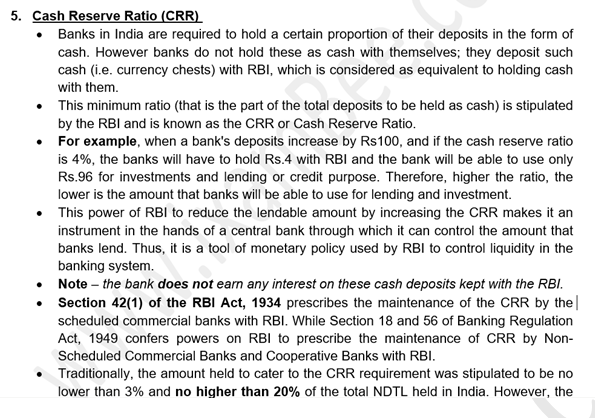Question
What is the rate of interest earned on CRR maintained by
banks with RBI?Solution
Banks in India are required to hold a certain proportion of their deposits in the form of cash. However banks do not hold these as cash with themselves; they deposit such cash (i.e. currency chests) with RBI, which is considered as equivalent to holding cash with them. This minimum ratio (that is the part of the total deposits to be held as cash) is stipulated by the RBI and is known as the CRR or Cash Reserve Ratio. Note – the bank does not earn any interest on these cash deposits kept with the RBI. Snapshot from study notes of the ixamBee SEBI course covering topic in crisp and easy to remember format 
Under The Employee Compensation Act, 1923, which of the following are not considered as dependent of deceased workman for the purpose of paying compens...
M abets N to commit murder, but N fails to commit the murder. However, during the attempt, N causes simple hurt to the intended victim. Under Section 55...
Once a suit has been instituted, summons may be issued to defendant on such day not beyond _______ from date of institution of suit.
Which of the following is the correct spelling?
Under Section 23(2), a Magistrate of the First Class may impose a fine not exceeding—
What constitutes sufficient consideration for a guarantee?
Under the Code of Civil Procedure, 1908, which of the following statement is not correct?
Under the Bharatiya Sakshya Adhiniyam , what does the Court presume regarding the information in an Electronic Signature Certificate?
As per theBharatiya Nyaya Sanhita, what is the punishment for dishonestly or fraudulently concealing or removing property?
What is the punishment for someone who dishonestly or fraudulently executes a deed of transfer containing a false statement of consideration "as per th...


